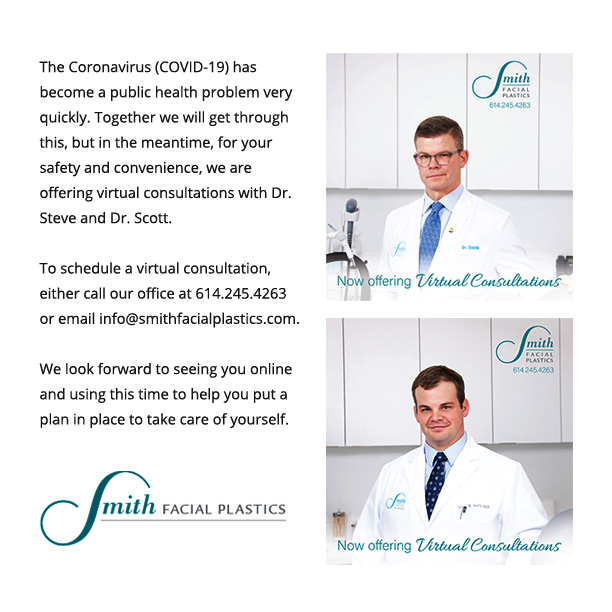Common Myths About Facelifts – Blog
Today’s plastic surgery patients have more options than before. You can choose between injections, laser treatments or traditional surgery. When it comes to surgery, you have the option of traditional, invasive procedures or less invasive surgeries with shorter downtimes. The number of options available has perhaps led to some misconceptions, myths and confusion about certain surgeries. One procedure that suffers many misconceptions is the facelift. If you’re considering the surgery, speaking with a facial plastic surgeon beforehand will help you separate fact from fiction.
Your Results Will Last Forever
A facelift will help reverse the signs of aging on your face. But the procedure won’t keep the hands of time from marching forward, nor will it permanently freeze your face in a state of youth. The results from a facelift will be long-lasting, with many patients seeing results for about a decade or so. But your face will continue to age after the surgery.
Although you can’t stop time with the surgery, there are a few things you can do to make the most of the procedure. Listen to your surgeon’s instructions during recovery. Make every effort to avoid a lot of sun exposure. Wearing sunscreen all the time will help protect your face from the aging effects of the sun’s rays. Eating a healthy diet will help you stay in good shape and keep the signs of aging from creeping back onto your face.
Your Results Will Look Unnatural
Once you’ve seen the “windswept” look created by older, traditional facelift techniques, you know why some patients fear they will end up with a tightly pulled, permanently surprised looking face. Fortunately that unnatural look is largely a thing of the past. Older techniques relied on tightening the skin during the surgery. Today, the procedure involves cutting away extra skin and fat and tightening the underlying muscles, creating a more natural look overall.
Another way to avoid an unnatural look is to avoid having too much done to your face. Some patients benefit from combining the surgery with another procedure, such as Botox. But going overboard is possible, creating an overdone look. Your surgeon can help you decide what procedure or combination of procedures will give you the most natural results.
You’ll Have to Hide for Months Afterwards
A facelift does have a longer recovery time than certain other procedures, such as injections or a mini facelift. Bruising and swelling are also common after the surgery and you’ll be bandaged for a few days afterwards. While you can expect some swelling and bruising for a few weeks and most surgeons recommend taking about two weeks off from work, you won’t be shut off from society during your recovery.
Usually, you’ll find that you’re able to go out and about at the two week point. Many patients see friends and family well before that. As you start to heal from the surgery, your surgeon can give you pointers on using makeup to conceal any lingering bruises so that you feel confident going out in the public again.
You Won’t Need a Facelift Until You’re 60 or 70
A lot of people associate facelifts with older patients. While a 70-year-old patient who is in good health can benefit from the surgery, it’s not exclusively for the geriatric set. In many cases, having the surgery performed relatively early, in your 40s or 50s, can provide even better results.
By the time you reach age 60 or 70, you’ll likely have signs of aging on other areas of the face, which can’t be helped by a facelift. If you decide to have just a facelift, your results might look unbalanced, as you have signs of aging in the area around the eyes, for example, but look more youthful around your neck and chin. Older patients might need to combine surgeries to get the same results they’d have gotten if they’d had surgery earlier.
You’ll Get the Same Results From Injections
Injections can really help when it comes to the signs of aging on your face. Botox can help ease the appearance of frown lines while fillers such as Juvederm can help with the lines and wrinkles around your nose and mouth. While injections might seem like a quick and easy alternative to surgery, they really aren’t the same thing and won’t give you the same results.
A facelift not only reduces wrinkles, it also tightens the skin, reducing sagging and looseness. Injections don’t do that. Injections also don’t last nearly as long as the results from surgery. You might see results for a few months or up to two years after an injection.
Getting the facts about a facelift will help you decide if the procedure is right for you. A fourth-generation facial plastic surgeon, Dr. Stephen Smith can help you weigh the pros and cons and sort reality from fiction when it comes to facelifts. You can find Dr. Smith at two practices in Ohio . Call 614-245-4263 for a consultation at the Gahanna, Ohio practice. You can also see Dr. Smith in Columbus, Ohio. Call 614-678-7180 to schedule an appointment today.


